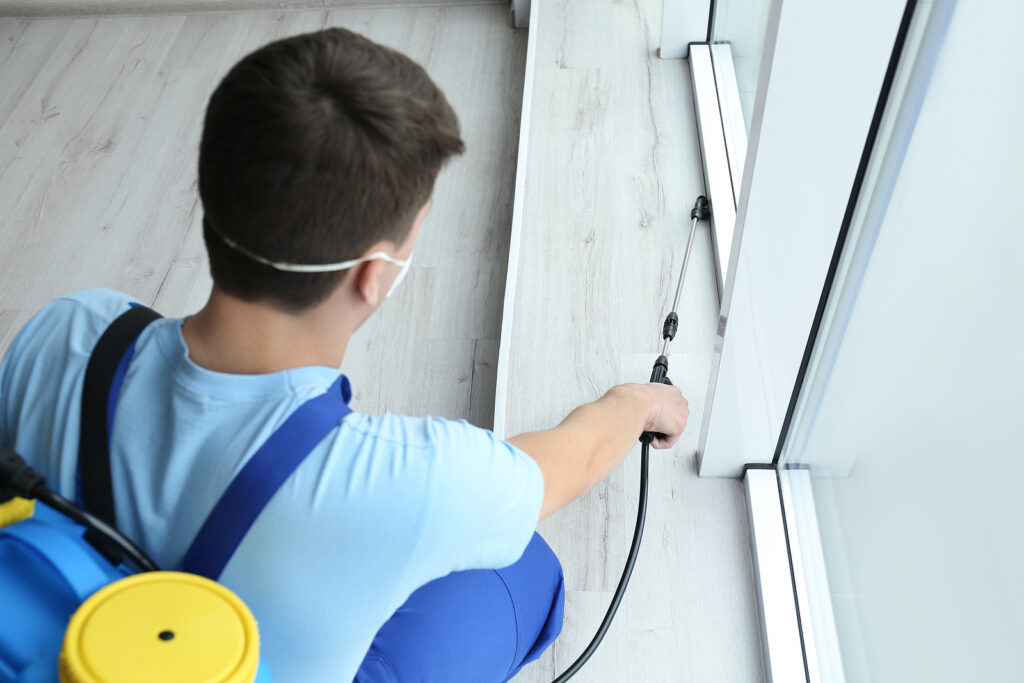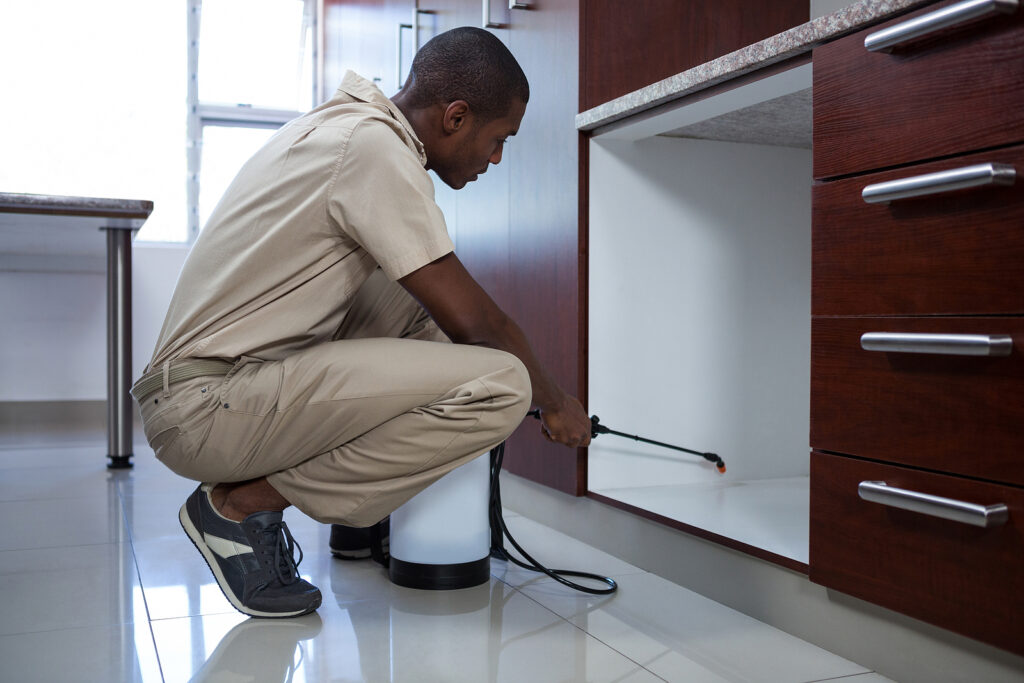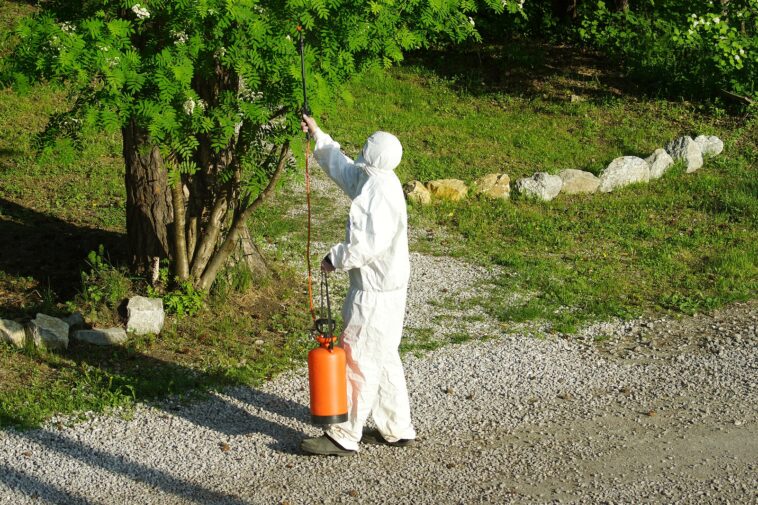DIY Termite Treatment
Dealing with a termite infestation can be an absolute nightmare for us homeowners. These little wood-devouring critters can wreak havoc on our homes, not only causing extensive damage but also significantly reducing the overall value of our cherished properties.
When faced with the threat of these voracious insects, many of us are exploring DIY termite treatment solutions as a proactive measure or for tackling those smaller infestations. If you're like me and want to understand the steps involved in taking matters into your own hands when it comes to termite control, you're in the right place.
Understanding Termites and Their Threat
Termites are minuscule insects that, despite their size, can bring about significant damage to structures. Renowned primarily for their appetite for wood, these pests voraciously feed on cellulose, the main component found in wood. As a result, they can severely weaken and ultimately compromise the structural stability of houses, buildings, and other wooden structures.
There are numerous species of termites distributed globally. Among the most common species are the subterranean, dry wood, and damp wood termites. Each species has its own unique characteristics and habitat preferences, but they all share a common trait:
their potential to wreak havoc on properties. For homeowners, recognizing the signs of a termite infestation and understanding their behavior is crucial to safeguarding their investments and ensuring the longevity of their homes.
The Importance of Early Detection
Why is Early Detection Crucial?
Spotting a termite infestation at its initial stages offers numerous advantages. Primarily, early detection can significantly reduce the scale and cost of the required treatment. When termite activity is identified promptly, the resulting damage is minimized, preserving the structural integrity of your home. Additionally, for those who prefer handling infestations themselves, early detection can increase the likelihood of a do-it-yourself termite treatment being successful.
Indicators of a Termite Presence in Your Home:
- Mud Tubes on Walls: One of the most visible signs of a subterranean termite infestation is the presence of mud tubes. These pencil-sized tunnels made of soil, wood particles, and termite saliva act as protective highways, allowing termites to travel between their underground nests and their food sources above ground without being exposed to open air or predators.
- Hollowed or Damaged Wood: Termites consume wood from the inside out, often leaving behind a thin veneer of timber or paint. If you tap on an area that has termite damage, it may sound hollow or papery due to the missing underlying wood.
- Discarded Wings from Swarmers: Reproductive termites, or swarmers, fly out to establish new colonies. After their nuptial flight, they shed their wings. Discovering piles of these tiny wings, especially near windowsills or lights, is an indication of a recent termite swarming event in or around your property.
- Termite Droppings (Frass): Drywood termites produce droppings, often referred to as frass, as they digest wood. These droppings look like tiny, granulated pellets and are often found in mounds beneath the infested wood. Their presence can serve as a clear sign of an active termite colony.

Common DIY Termite Treatment Methods
Several diy termite control treatment options are at your disposal, each with its own set of advantages and disadvantages. Below are more detailed explanations of some common methods:
Liquid Termiticides
- How It Works: Liquid termiticides are specialized chemical solutions designed to form a protective barrier around your home. This barrier acts to either repel or poison termites attempting to cross it, preventing them from gaining access to your property.
- Application: Typically, this involves digging a trench around the perimeter of your home's foundation and filling it with the termiticide according to the manufacturer's instructions. Some formulations may also be applied directly to wood surfaces, acting as both a repellent and a poison.
- Advantages: Highly effective if applied correctly, providing long-term protection. Many of these products are used by professionals.
- Disadvantages: Chemicals can be harmful if not handled correctly, posing risks to humans and pets. Environmental concerns are also associated with some types of liquid termiticides.
Bait Stations
- How It Works: Bait stations are strategically placed in-ground devices that contain a food source for termites, usually wood or cellulose material, laced with a slow-acting poison.
- Application: Install the stations around your property, focusing on areas of observed termite activity. Periodically check and replace the bait as needed.
- Advantages: Environmentally safer and easier to manage, as they target termites directly without broadly affecting the surrounding soil or structure.
- Disadvantages: May not be effective against extensive or deeply entrenched infestations. Requires constant monitoring.
Diatomaceous Earth
- How It Works: Composed of fossilized remains of tiny aquatic organisms, diatomaceous earth works by penetrating the exoskeletons of termites, causing them to dehydrate and die.
- Application: Sprinkle a layer of diatomaceous earth around termite-prone areas, or directly onto colonies if they can be accessed.
- Advantages: Natural, non-toxic, and environmentally friendly. Can be used both indoors and outdoors.
- Disadvantages: Must be kept dry to be effective. Limited range and may not reach termites located deep within structures or underground.
Beneficial Nematodes
- How It Works: Beneficial nematodes are microscopic worms that infect termites and release bacteria that subsequently kill the host insect.
- Application: These nematodes are often distributed in a water mixture and can be sprayed onto affected soil areas, where they will seek out termite colonies.
- Advantages: Natural and non-toxic, posing no risk to humans or pets. Effective for treating subterranean termites.
- Disadvantages: Limited shelf life and must be applied under specific environmental conditions for maximum effectiveness. May not work well for drywood termites.

Step-by-step Guide to Effective DIY Termite Treatment
Pinpointing the Affected Zones
Begin with a comprehensive inspection of your home's interior and exterior. Be vigilant for the specific indicators of termite activity previously outlined, such as mud tubes, hollowed wood, discarded wings, and termite droppings.
Examine not only the structural elements of your home but also wooden furniture, floorboards, and even walls that contain cellulose materials. The more thorough your initial inspection, the more effectively you can target your treatment.
Selecting the Appropriate Treatment Approach
Based on your inspection findings, consider the magnitude of the termite infestation and identify which areas are affected. For minor infestations, DIY treatments may suffice. However, for more extensive issues, employing a combination of different treatment strategies could provide a more thorough solution.
Executing the Treatment Plan
- Liquid Termiticides: Adhere strictly to the guidelines specified by the product's manufacturer. Commonly, this will entail excavating a trench along the perimeter of your home's foundation. Pour the liquid termiticide into this trench, taking care to distribute it evenly to establish a complete barrier that termites cannot penetrate.
- Bait Stations: Install these stations in strategic locations around your property, particularly focusing on the areas where termite activity has been observed. Consistently monitor these bait stations for signs of termite feeding and replace the bait as it becomes consumed or as directed by the manufacturer.
- Diatomaceous Earth: Apply a layer of this natural, non-toxic powder in and around areas where termite activity has been confirmed. It is vital to keep the diatomaceous earth dry, as moisture can negate its effectiveness against termites.
- Beneficial Nematodes: These microscopic worms prey on termites and can be introduced to the soil where termite activity has been identified. Simply follow the instructions for dispersing them in the affected soil areas surrounding your home.
Ongoing Monitoring and Reapplication
Maintain a vigilant watch for new signs of termite presence or re-infestation. Given that termites can be particularly resilient, it may be necessary to reapply treatments periodically.
Keep a regular check on bait stations, re-dig trenches for liquid termiticides, or reapply diatomaceous earth and beneficial nematodes as needed. The key to long-term protection is consistent monitoring and prompt action, which ensures that your home remains free from the threat of termite damage.
Precautions and Safety Measures
Don Protective Gear at All Times
It's critical to prioritize your safety by wearing appropriate protective gear when dealing with chemical termite treatments. High-quality gloves made of materials resistant to chemical penetration are essential for safeguarding your hands.
Additionally, consider using face masks that filter fumes and particulates to protect your respiratory system. Eye protection, such as safety goggles, is also crucial to shield your eyes from potential chemical splashes or airborne particles.
Isolate Children and Pets from Treated Zones
Make sure to keep children and pets at a safe distance from areas where termite treatment chemicals are being applied. These areas should be clearly demarcated, and access to them should be restricted until it has been deemed safe based on the manufacturer’s instructions or guidelines.
In many cases, it might be prudent to vacate the premises or at least the treated areas with your children and pets until the chemicals have settled or dried.
Adherence to the Manufacturer's Guidelines is Non-Negotiable
It is absolutely vital to read and strictly adhere to the instructions provided by the manufacturer of the termite treatment products you’re using. This not only ensures effective application but also minimizes risks associated with misuse, such as skin irritation or more severe health hazards.
Always follow the recommended dosages, application methods, and safety precautions listed on the product label or accompanying documentation.
Safe Storage of Termite Treatment Products
Termite treatment chemicals can pose serious risks if ingested, inhaled, or contacted by skin, especially for children and pets. Store these products in a secure, locked location that is out of reach of both.
Always keep the chemicals in their original containers with labels intact so that anyone who encounters them can immediately identify them and read any accompanying safety warnings or directions. Consider using child-proof locks for added security if the storage area is accessible to children.
When to Seek Professional Help
While DIY termite treatments can serve as beneficial preventive measures and even tackle smaller infestations, there are distinct scenarios where the expertise of a professional is not just advantageous, but crucial:
Extensive Infestations
When termites have colonized and spread across multiple areas or sections of your property, this can indicate a deep-seated and widespread infestation. Such infestations often penetrate areas that might not be immediately visible or accessible to homeowners. In these instances, the expertise, tools, and advanced treatment methods of professional exterminators are essential for thorough eradication.
Persistent Infestations
If you've engaged in DIY termite treatments several times and yet find yourself in a seemingly unending battle with these pests, it's a clear signal that the underlying cause of the infestation hasn't been addressed or that your treatment approach might not be comprehensive enough. Professionals can not only treat the existing problem but also identify and address vulnerabilities in your home that may be inviting to termites.
Doubts Regarding Treatment Application
Termite treatment isn't just about applying chemicals or setting bait stations; it's about doing so strategically and safely. If you ever feel uncertain about the correct application methods, dosages, or safety measures, or even if you're not seeing the desired results after treatment, it's wise to seek a consultation with a professional. An expert can provide guidance, assess the effectiveness of your treatments, and offer recommendations or alternative solutions.
Pros and Cons of DIY Termite Treatment
Pros:
- Cost-Effective: DIY termite treatments are generally more affordable than hiring professionals, especially for minor infestations or preventive measures.
- Immediate Action: You can address the termite issue as soon as you notice it without waiting for a scheduled appointment with a professional.
- Flexibility: You have the freedom to choose the method and products that best suit your needs and comfort level, allowing for personalized treatment plans.
- Learning Experience: Engaging in DIY treatments can be educational, providing insights into termite behaviors, preferred habitats, and effective preventive measures.
- Control Over Chemicals: When doing it yourself, you can opt for natural or less toxic solutions if you have concerns about the environmental impact or the safety of chemical treatments.
Cons:
- Potential Ineffectiveness: Without professional expertise, you might not treat the root cause of the infestation, leading to recurring problems.
- Missed Infestations: Professionals have tools and expertise to detect termite activities that might be missed in a DIY inspection, potentially leading to untreated areas.
- Safety Concerns: Improper handling or application of termite treatment chemicals can pose health risks to you, your family, or your pets.
FAQs about DIY Termite Treatment
1. What exactly are termites and why should homeowners be concerned about them?
Termites are small, white to light brown insects that have a diet primarily composed of cellulose, which is a major component found in wood. While they play a role in nature by helping to break down tough plant fibers, when they infiltrate human habitats, they can cause extensive structural damage to homes, furniture, and other wooden structures. This damage often leads to costly repairs and can significantly reduce the value of a property.
2. How can I identify a termite infestation in my home?
Recognizing a termite infestation early is crucial to prevent severe damage. Common indicators include:
- Mud tubes, which are small tunnels made of soil and wood debris, appearing on exterior and interior walls.
- Wood that sounds hollow when tapped or that is visibly deteriorated.
- Discarded wings, typically from reproductive termites called swarmers, often seen near windows or doors.
- Termite droppings or frass, which resemble small, dark pellets.
3. Are DIY treatments for termites truly effective?
DIY termite treatments can provide satisfactory results when dealing with minor infestations or when used as preventive measures. But, if the infestation has spread widely or is deeply entrenched, seeking help from professional exterminators is recommended.
4. Which DIY termite treatment methods are commonly employed?
There are several popular DIY termite treatments:
- Liquid termiticides: Chemicals that can be applied to the soil around a home to create a barrier against termites.
- Bait stations: These are placed around a home to attract termites, which consume the bait and carry it back to their colony, poisoning other termites.
- Diatomaceous earth: A naturally occurring, abrasive powder that damages the exoskeleton of termites, causing dehydration and death.
- Beneficial nematodes: Microscopic worms that enter termite bodies, release bacteria, and subsequently kill them.
5. How frequently should I check for termite activity post-treatment?
After treatment, vigilance is crucial. Conduct thorough inspections of your property every few months or with the change of each season, ensuring you remain proactive in detecting any signs of renewed termite activity.
6. Are DIY termite treatments safe around children and pets?
Although many DIY termite treatments can be pet and child-friendly, it's imperative to carefully read and adhere to manufacturer recommendations. Always ensure that treated areas are inaccessible to children and pets until it's declared safe.
7. When is it advisable to engage a professional instead of opting for a DIY solution?
If you notice that the termite infestation is extensive, continues to reoccur after multiple treatments, or if you're uncertain about the correct application of treatments, it's wise to enlist the expertise of a professional exterminator.
8. Can I resort to natural methods for dealing with termites?
Absolutely. Natural options, such as diatomaceous earth and beneficial nematodes, are both environmentally friendly and effective in managing termite populations.
9. What is the longevity of a DIY termite treatment?
The effectiveness span of DIY best termite treatments can vary. For example, while some liquid termiticides offer protection for multiple years, bait stations might need consistent monitoring and periodic replacement.
Conclusion
In conclusion, as a homeowner who has battled the relentless threat of termites, I've come to understand that vigilance and timely action are our best allies. Termites may be small, but their potential for causing significant damage to our homes is enormous.
While DIY termite treatments offer a cost-effective and educational approach for minor infestations or preventive measures, it's crucial to acknowledge their limitations. For more extensive or persistent problems, or when doubts about proper treatment application arise, seeking the expertise of professional exterminators is a prudent choice.
Our homes are not just structures; they are the heart of our families and our investments. So, whether we choose to combat these wood-devouring pests ourselves or enlist professional help, one thing remains clear: protecting our homes from termites is an ongoing commitment that ensures the longevity and value of our cherished properties.
Sources
https://www.epa.gov/safepestcontrol/termites-how-identify-and-control-them




